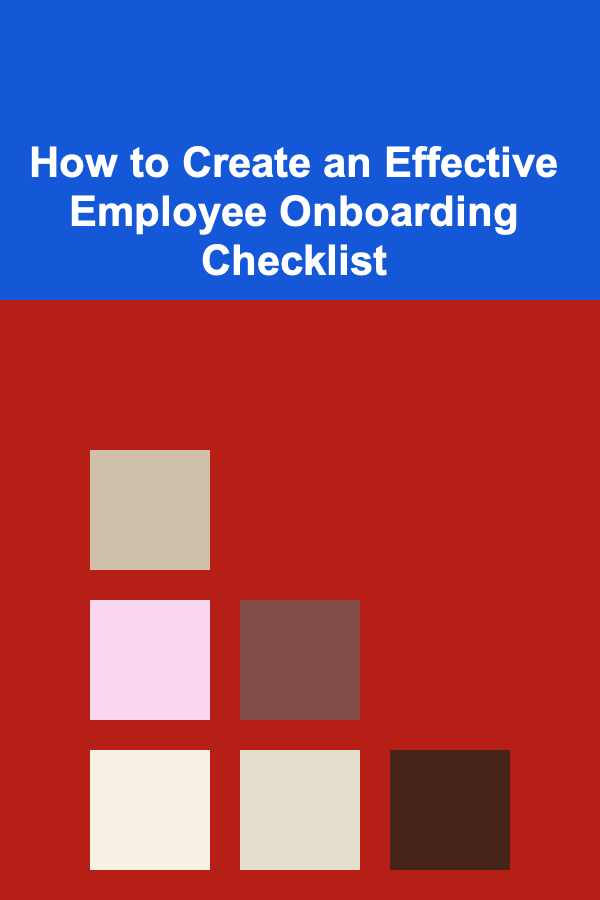
How to Sell Digital Products Successfully for Online Tutors
ebook include PDF & Audio bundle (Micro Guide)
$12.99$5.99
Limited Time Offer! Order within the next:

In the digital age, online tutoring has evolved beyond one-on-one lessons and simple educational materials. With the rise of e-learning platforms and increased demand for self-paced learning, online tutors now have an incredible opportunity to diversify their income streams by selling digital products. Whether you're teaching English as a second language, mathematics, or a specialized subject like coding or music, selling digital products can complement your tutoring business and generate passive income.
This guide will help you understand how to sell digital products successfully as an online tutor. We'll cover everything from identifying what digital products to create, setting up the infrastructure to sell them, and promoting your products effectively.
Step 1: Identify the Digital Products You Can Sell
Before diving into the logistics of selling, it's essential to understand which digital products will resonate with your audience. Digital products should enhance the learning experience for your students and make their education journey easier, more enjoyable, or more comprehensive.
1.1 Study Guides and Cheat Sheets
One of the most valuable resources you can offer as an online tutor is well-crafted study guides or cheat sheets. These documents can condense complex lessons into simple, easy-to-understand points.
- Format: PDFs, Google Docs, or downloadable eBooks
- Target Audience: Students who need a quick recap or a reference for key concepts.
- Topics: Summarized lessons, key formulas, common mistakes, and study tips.
1.2 Online Courses and Workshops
If you have an in-depth understanding of a subject, you can create self-paced courses or workshops. These could be beginner-friendly for newcomers or more advanced materials for students looking to deepen their knowledge.
- Format: Video courses, audio lessons, or slide presentations.
- Target Audience: Students who prefer structured learning or need supplementary material.
- Topics: Recorded lessons, assessments, quizzes, and activities.
1.3 Worksheets and Practice Exercises
Worksheets and practice exercises are a great way to engage students and provide them with hands-on opportunities to apply what they've learned. These resources can be subject-specific or geared toward particular skills, such as essay writing, math problems, or vocabulary practice.
- Format: Interactive PDFs, downloadable Word documents, or Google Forms.
- Target Audience: Students who need additional practice or homework help.
- Topics: Problems to solve, reading comprehension questions, writing prompts, and more.
1.4 Educational Templates and Planners
Another digital product idea is creating educational templates, planners, or tracking sheets. These tools help students stay organized, plan their study time, or track their learning progress.
- Format: Editable templates (Google Docs, Canva, or Excel sheets)
- Target Audience: Students who need organization tools to enhance their learning process.
- Topics: Study schedules, goal trackers, assignment planners, revision timetables.
1.5 Test Preparation Materials
If you're tutoring students for exams like SATs, GREs, or language proficiency tests, creating digital test preparation materials is a valuable product.
- Format: PDFs, multiple-choice quizzes, practice exams, answer keys.
- Target Audience: Students preparing for standardized tests or professional certifications.
- Topics: Practice tests, question banks, test-taking strategies, tips for stress management.
1.6 E-books and Educational eBooks
Creating an e-book on a topic you are passionate about can be an excellent digital product. These could range from subject guides to learning techniques, productivity hacks, or advice for students on succeeding academically.
- Format: PDF, ePub, or Mobi files.
- Target Audience: Students who want a deeper understanding of a topic.
- Topics: "How-to" guides, study techniques, subject-specific books, and success stories.
Step 2: Choose the Right Platform to Sell Your Digital Products
Once you've identified your digital products, the next step is selecting the right platform to sell them. Here are a few options to consider:
2.1 Your Own Website
Creating your website can be a great way to maintain full control over your products and branding. You can use platforms like WordPress, Wix, or Squarespace to easily set up an online store.
- Pros: Full control over your brand, the ability to build an email list, and more profit since you're not sharing a cut with third-party platforms.
- Cons: Requires time and effort to set up, maintain, and promote the site.
2.2 Etsy
Etsy is primarily known for handmade goods, but many online tutors are successfully selling educational digital products here. Etsy provides an established marketplace and handles most of the transaction logistics.
- Pros: Built-in customer base, easy-to-use platform.
- Cons: Etsy charges fees for listings and transactions, and you'll need to compete with other sellers.
2.3 Gumroad
Gumroad is a simple platform designed specifically for selling digital products. It allows creators to sell PDFs, e-books, videos, and more with minimal setup.
- Pros: Easy-to-use, low transaction fees, offers subscription services, and can integrate with your website.
- Cons: Limited customization options and a smaller audience compared to larger platforms.
2.4 Teachable or Thinkific
For more comprehensive course-based digital products, platforms like Teachable or Thinkific provide a structured way to create and sell online courses. These platforms handle everything from video hosting to payment processing.
- Pros: Great for building full-fledged courses, reliable customer service, built-in features like quizzes and assessments.
- Cons: These platforms charge a monthly fee and take a cut of your sales.
2.5 Udemy or Skillshare
If you prefer to focus entirely on creating course content, platforms like Udemy or Skillshare can help you get your materials in front of students who are already searching for courses.
- Pros: Massive built-in audience, easy to use.
- Cons: Revenue share with the platform, limited control over pricing and promotion.
Step 3: Setting Up Your Digital Store
Creating an appealing online store is essential for attracting customers and driving sales. Whether you're using Etsy, Gumroad, or your website, make sure your store is user-friendly and professional.
3.1 Design a Professional Storefront
Your storefront should reflect your expertise as an online tutor. If you're using your website, make sure to choose a clean design that's easy to navigate. For platforms like Etsy, ensure that your shop banner, logo, and descriptions are appealing and clear.
- Tips for a great storefront :
- Use high-quality images of your digital products.
- Write compelling product descriptions that highlight the benefits of each product.
- Include testimonials or reviews from satisfied students if possible.
3.2 Set Up Payment Methods
Make sure your store is set up to handle payments securely. Popular platforms like Etsy, Gumroad, and Teachable offer integrated payment processing, but if you're selling from your own website, you'll need to set up payment methods like PayPal, Stripe, or credit card processing.
- Tips for payment setup :
- Ensure the payment process is quick and easy.
- Offer a variety of payment options for your customers' convenience.
- Make sure to clearly display your pricing and any taxes that might be added.
Step 4: Pricing Your Digital Products
Pricing digital products can be tricky. On one hand, you don't want to undervalue your work, but on the other hand, you need to be competitive in the marketplace. Here are some strategies to price your digital products effectively:
4.1 Research Competitors
Look at what other online tutors or creators in your niche are charging for similar digital products. Make sure to factor in the time you've spent creating your product and the value it provides to your audience.
4.2 Offer Multiple Pricing Tiers
Consider offering products at different price points to appeal to a wider audience. For example, you can sell an entry-level study guide at a low price, while offering a comprehensive course at a higher price point.
4.3 Bundle Products
Another effective pricing strategy is offering product bundles. By grouping similar products together at a discounted price, you can encourage customers to buy more. For instance, you can bundle worksheets with study guides or offer a set of practice exams.
Step 5: Marketing Your Digital Products
Effective marketing is essential for driving traffic to your online store and generating sales. Here's how you can promote your digital products as an online tutor.
5.1 Leverage Social Media
Social media is one of the most powerful tools for promoting your digital products. Platforms like Instagram, Facebook, and Twitter are excellent places to connect with your audience, share valuable content, and promote your products.
- Instagram: Share educational tips, student testimonials, behind-the-scenes looks at your product creation process, and snippets from your courses.
- YouTube: If you're comfortable on camera, create short educational videos that provide value to your audience. You can mention your digital products in these videos and direct viewers to your store.
- Facebook Groups: Join relevant Facebook groups where your target audience spends time. Share helpful resources and promote your digital products subtly.
5.2 Build an Email List
Building an email list is crucial for long-term success. Collect email addresses from your website or social media followers, and send regular updates about new products, special offers, or educational content.
5.3 Offer Discounts and Promotions
Running occasional sales or offering limited-time discounts can encourage students to purchase your digital products. You can also offer a freebie, such as a sample worksheet or guide, in exchange for email signups.
5.4 Collaborate with Other Tutors or Influencers
Collaborating with other tutors or influencers in your field can be a great way to reach a larger audience. You can cross-promote each other's products, host webinars together, or even offer joint discounts.
Step 6: Monitor and Optimize Sales
Once your digital products are live, it's important to monitor your sales and gather feedback. Regularly review your sales performance, track which products are most popular, and look for ways to optimize your store.
- Ask for feedback: Send surveys or emails to your customers to get their opinions on your products.
- Use analytics: Platforms like Etsy, Gumroad, and Teachable offer analytics tools to track your sales and understand customer behavior.
- Optimize based on performance: Use customer feedback and sales data to tweak your product offerings, pricing, and marketing strategies.
Conclusion
Selling digital products as an online tutor is a great way to diversify your income, build a scalable business, and offer additional value to your students. By identifying the right digital products, choosing the right platform, setting up an attractive store, and using effective marketing strategies, you can build a successful digital product business alongside your tutoring services. With dedication and the right approach, you can tap into the growing demand for educational content and make a lasting impact in your niche.

How to Build a Functional Storage Closet in an Unused Corner
Read More
How to Create an Effective Employee Onboarding Checklist
Read More
How to Integrate SMS Automation Tools with Your Dropshipping Platform for Abandoned Cart Recovery
Read More
How to Save Energy While Lighting Your Home Effectively
Read More
How to Simplify Your Errands and Tasks
Read More
How to Use a Meal Planning Calendar Effectively
Read MoreOther Products

How to Build a Functional Storage Closet in an Unused Corner
Read More
How to Create an Effective Employee Onboarding Checklist
Read More
How to Integrate SMS Automation Tools with Your Dropshipping Platform for Abandoned Cart Recovery
Read More
How to Save Energy While Lighting Your Home Effectively
Read More
How to Simplify Your Errands and Tasks
Read More